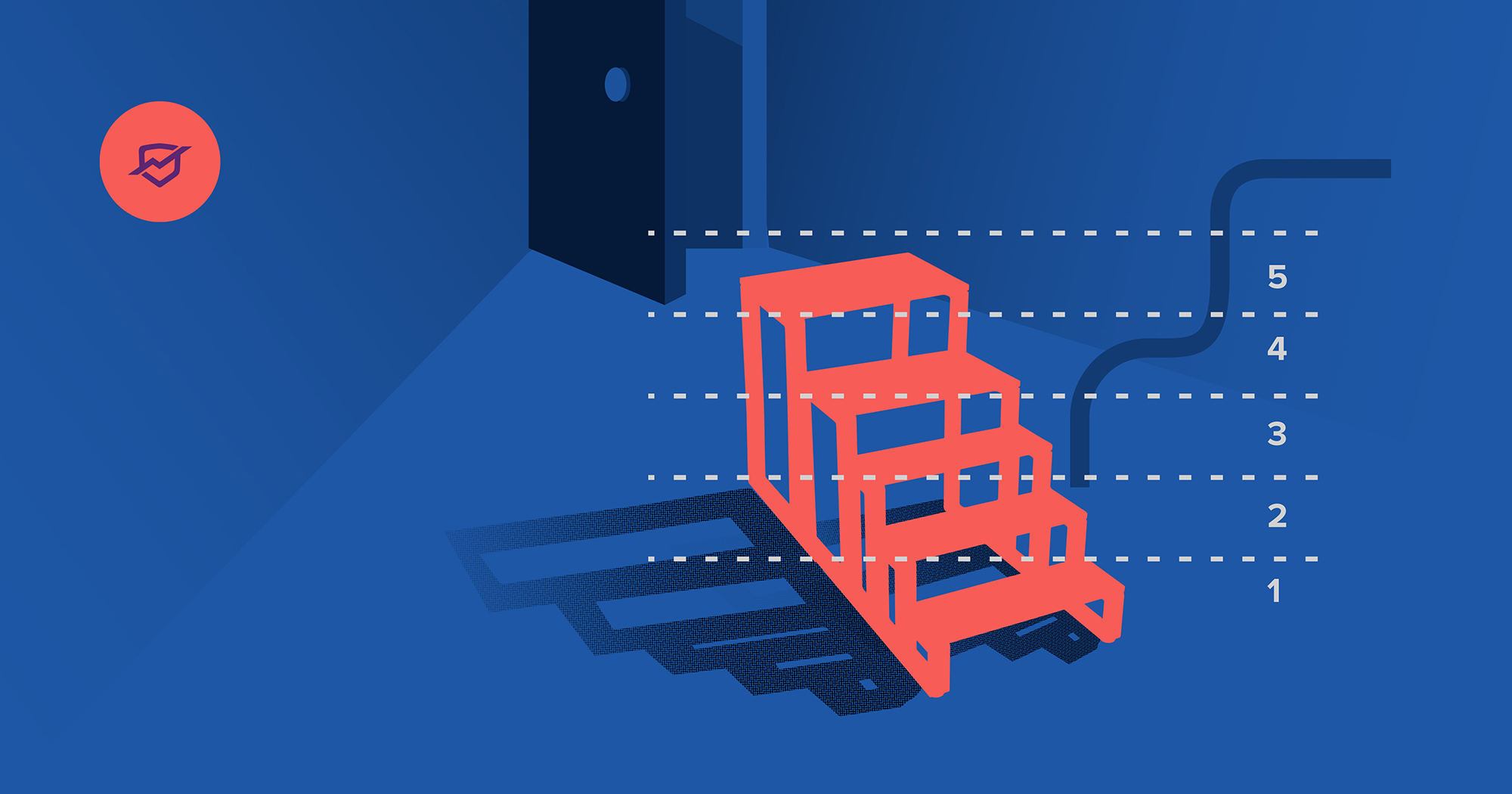
The new lending rules are here, and the legislation will be causing heartache for you if you’re a lender, advisor, or borrower.
Much has been written about loan applications being rejected under the Credit Contracts and Consumer Finance Act (CCCFA) requirements for reasons such as a couple of lottery tickets, takeaways, and Netflix subscriptions.
It’s important to note however, that these purchases aren’t the reason an applicant is being flagged as a risky borrower. What’s more accurate is that the applicant’s finances demonstrate an Uncommitted Monthly Income (UMI) that seems at risk because of them.
This is because lenders now have to assume that your historical behavior mirrors your pattern of future behavior — whereas in the past, it could be assumed that most borrowers would adjust their spending habits to suit their new life with a mortgage.
At PocketSmith, we make software that helps people organize these very financial transactions. If you’re planning to apply for a mortgage, here are five steps that you can take to make the process less stressful, and increase your odds of success.
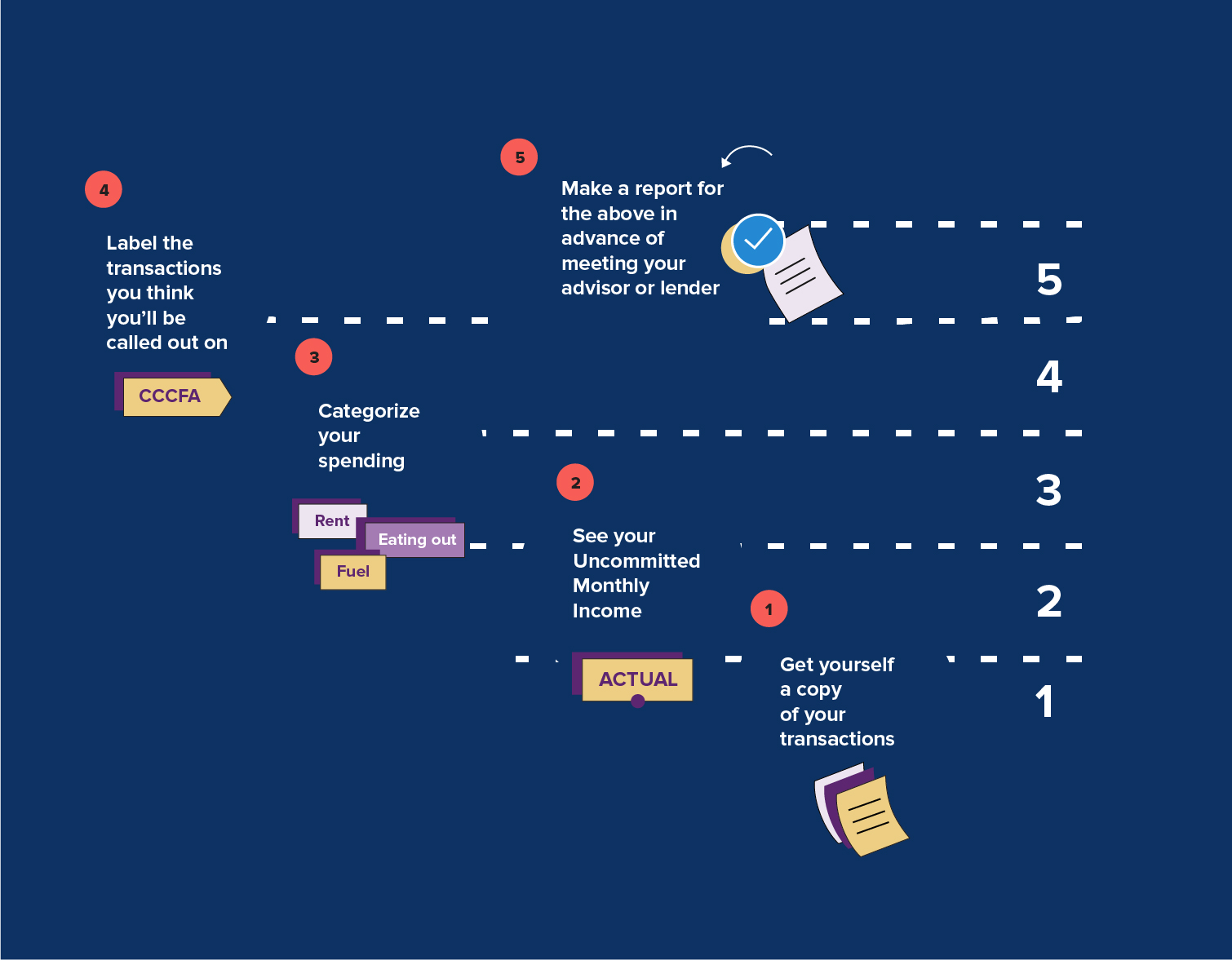
If your application doesn’t make it through the first time around, then the good news is that you’ll already have a way to demonstrate the changes required by the lender, as well as an organized system for your money!
You can achieve all of these steps using the free version of PocketSmith, and we’ve linked to additional resources below. If you want to save more time with automatic bank feeds, then get in touch with us for a free trial of our Premium subscription.
This is the information you’ll be providing your bank anyway, and it’s important to familiarize yourself with what they’ll be seeing. You will need three months of your transactions, and you can download them from your online banking website in a range of different file formats.
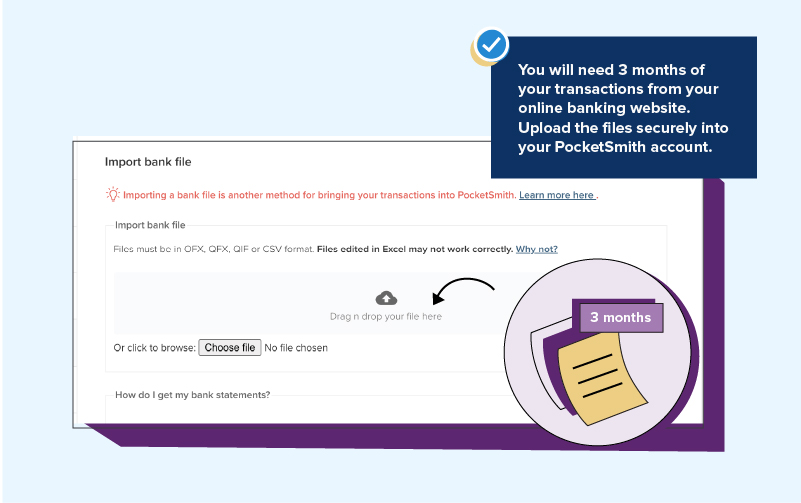
Upload the files securely into your PocketSmith account, and you’ll find all of your transactions in one place, initially organized by bank and account.
At this point, you can already use our excellent search engine to pull up facts and figures from the data, like names of places you’ve spent money at, amounts, and dates.
We enjoy the ability to see all of our transactions in one place, as it’s a lot like a living journal for your money. It also really helps to be able to find a historical purchase, which can otherwise seem like looking for the needle in a haystack as time goes on.
Learn Center articles:
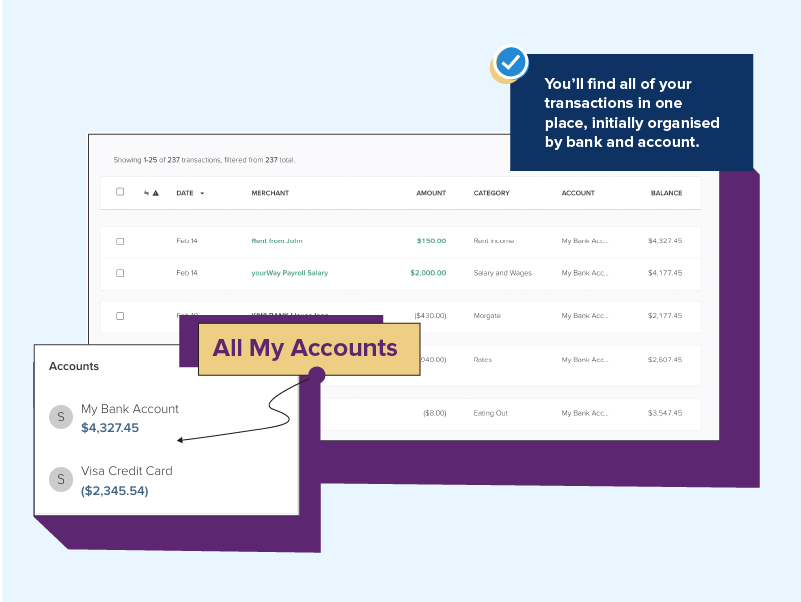
As mentioned above, your UMI, or monthly surplus, is the number that determines how effectively you can service a new mortgage.
You can find this figure straight away by going to the Income & Expense Statement. The top table, under ‘Actual’, will either show you a surplus (positive number) or a deficit (negative number in brackets). Click the number to see the calculation.

You can adjust the values you see by picking the date range as well as the accounts you want to include in the calculation.
Learn Center articles:
How much do you think you spend on eating out each month or on groceries? You can now find out by categorizing your spending. PocketSmith has a range of options for how to do this, ranging from a step-by-step process to a bulk option, and we’ll link to the guides below.
If you’re using automatic bank feeds on a Premium subscription, most of the categorization will also be automatically done for you. It’s still a good idea, though, to review and adjust your transactions for accuracy.
As you go, you can return to the Income & Expense Statement or the Trends page to see reports and graphs on your spending by category and time.
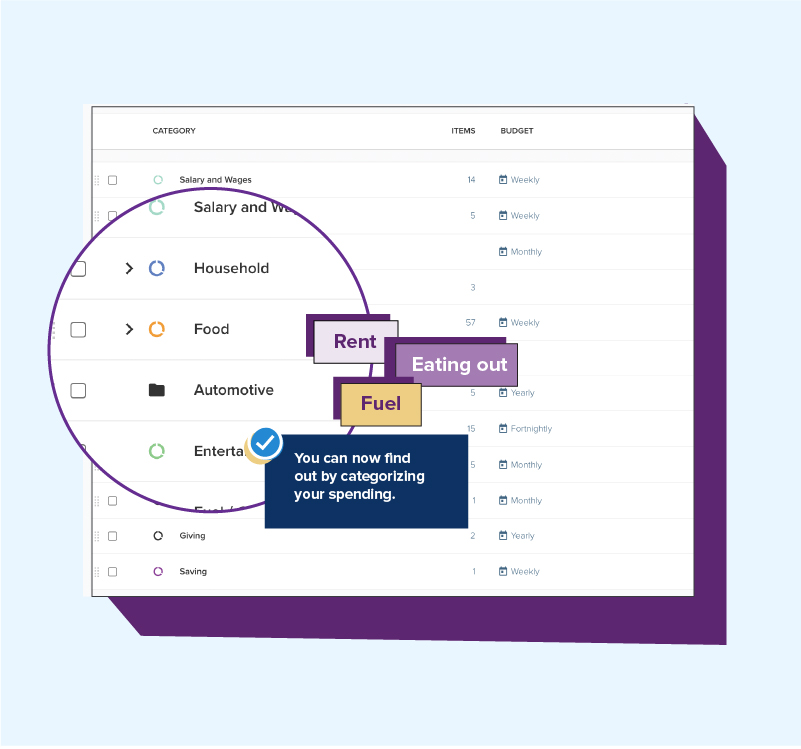
Learn Center articles:
If your Uncommitted Monthly Income is looking a little tight relative to your expected mortgage repayments, then it will be worth highlighting some of the transactions you now know the lenders are obliged to ask about.
Start by doing a search for some of the things you’ve heard about: takeaways, subscriptions, minor spending sprees. Remember that while these may not be fixed expenses — meaning, you can drop them anytime — lenders have to assume that they are.
This is the crux of the issue, but one that you have anticipated and can address head-on.
Use the tools on the Transactions page to hunt them down — the Search box will be pretty powerful here. Then use Labels to tag these transactions (something like “CCCFA” could work).
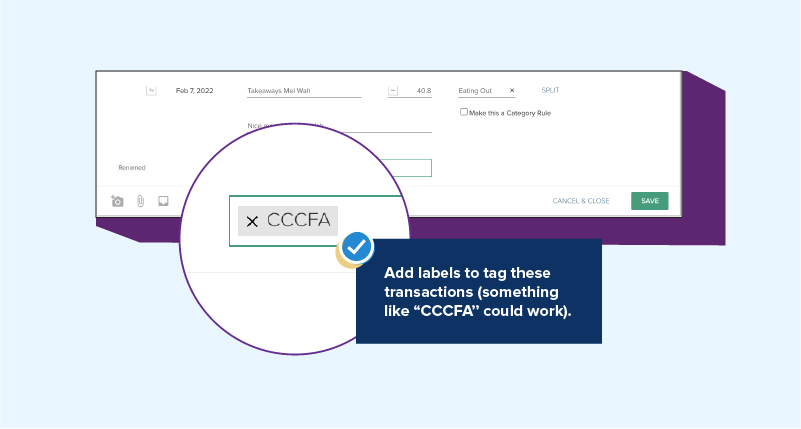
You might consider writing a note for some of the labeled transactions where necessary to clarify the reason for spending. If you think that these expenses are things that you’ll be cutting down on, you’ll now have a record of how to begin.
PocketSmith lets you make a Saved Search for specific labels, so you can bring up all the CCCFA transactions with a single click.
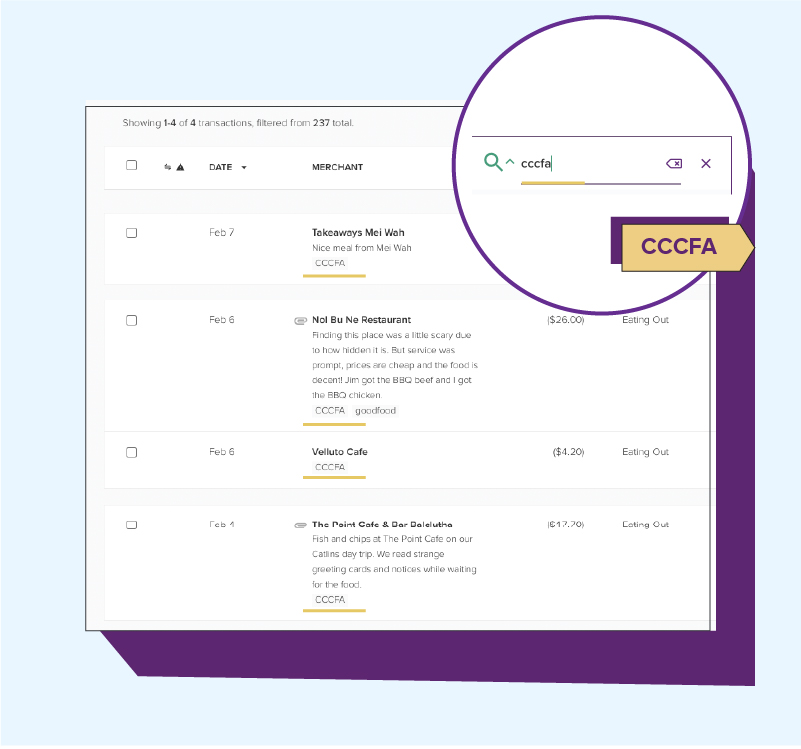
Learn Center articles:
This is where you can get creative! PocketSmith’s new Dashboard feature lets you pick and configure widgets that show you specific bits of information based on the above, like:
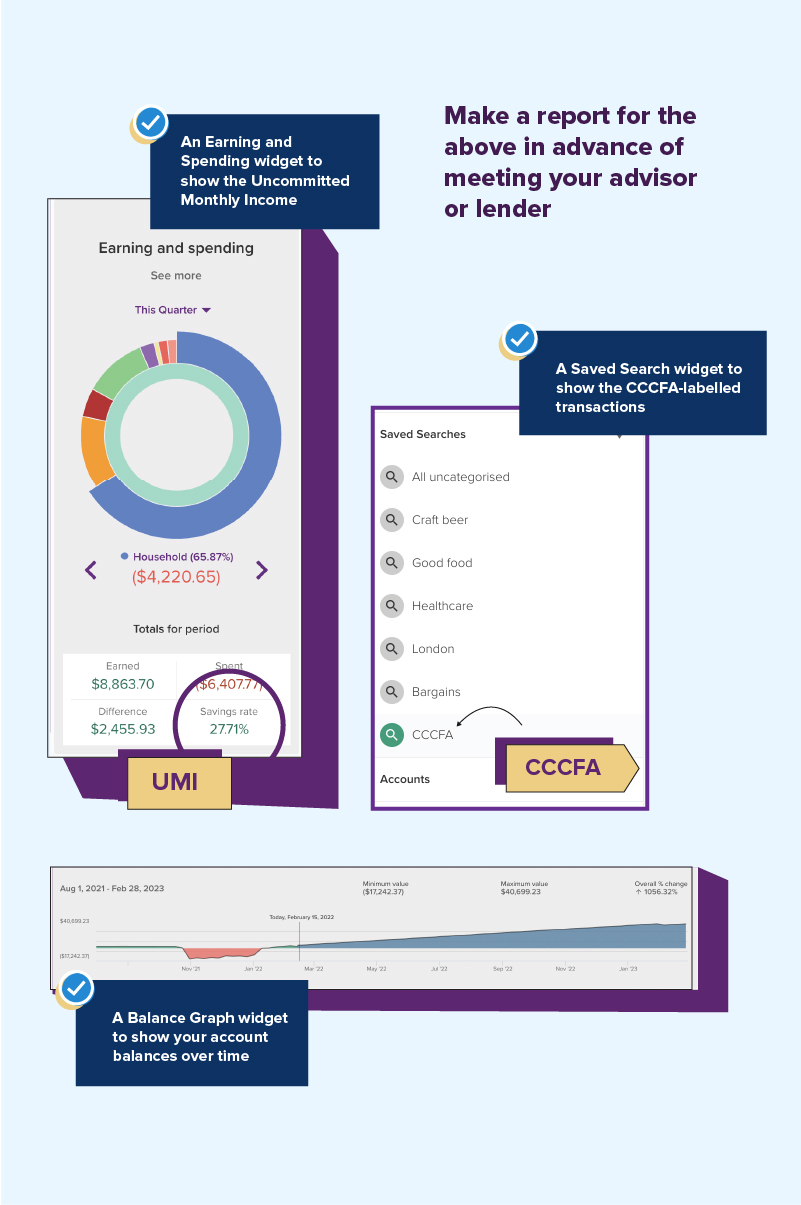
You can add these and more to a dashboard, making a custom report for your advisor or lender that hones in on the details.
Learn Center articles:
We hope that this has helped provide some clarity on how to get on top of the relevant information and, more importantly, have control during your fact-finding mission.
If you happen to need to adjust your spending behavior over the next three months before reapplying, then PocketSmith will help you continue to track your progress over this time.
Just keep uploading your transactions as you go. PocketSmith also has some wonderful budgeting and forecasting tools to help you set a plan and stay on track.
We understand that these new rules have inadvertently and disproportionately affected a large segment of home buyers, and we feel it too. We hope that these tools we’ve built can go some way towards empowering you on this important journey.
This article originally appeared in The Mortgage Lab on February 28, 2022.
Jason is the CEO and co-founder here at PocketSmith. He is fascinated by our unique relationships with our money, and is passionate about making peoples’ lives better through the technologies we craft. He’s been a sneakerhead since the 80’s, and loves gardening on sunny days while listening to Planet Money.